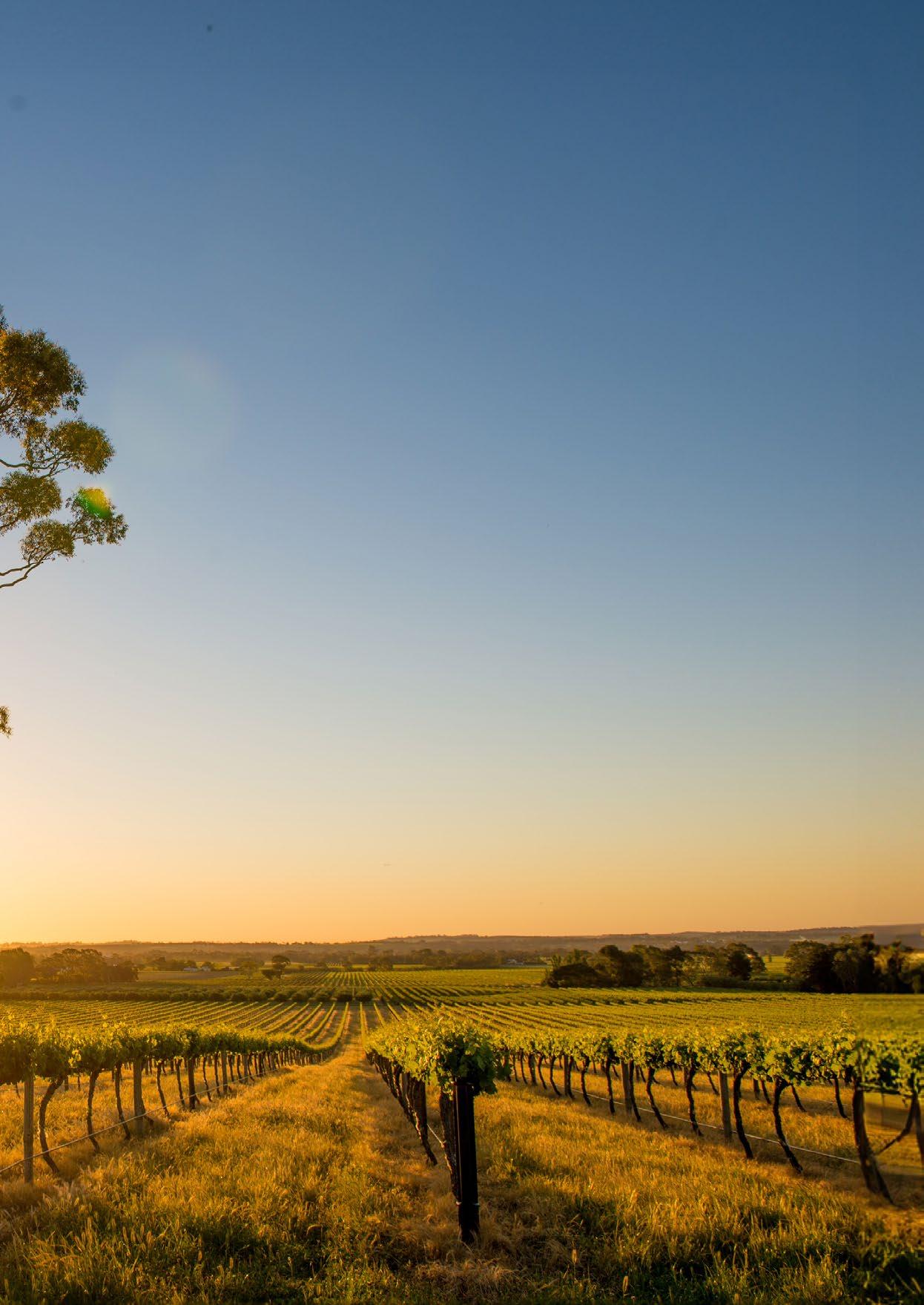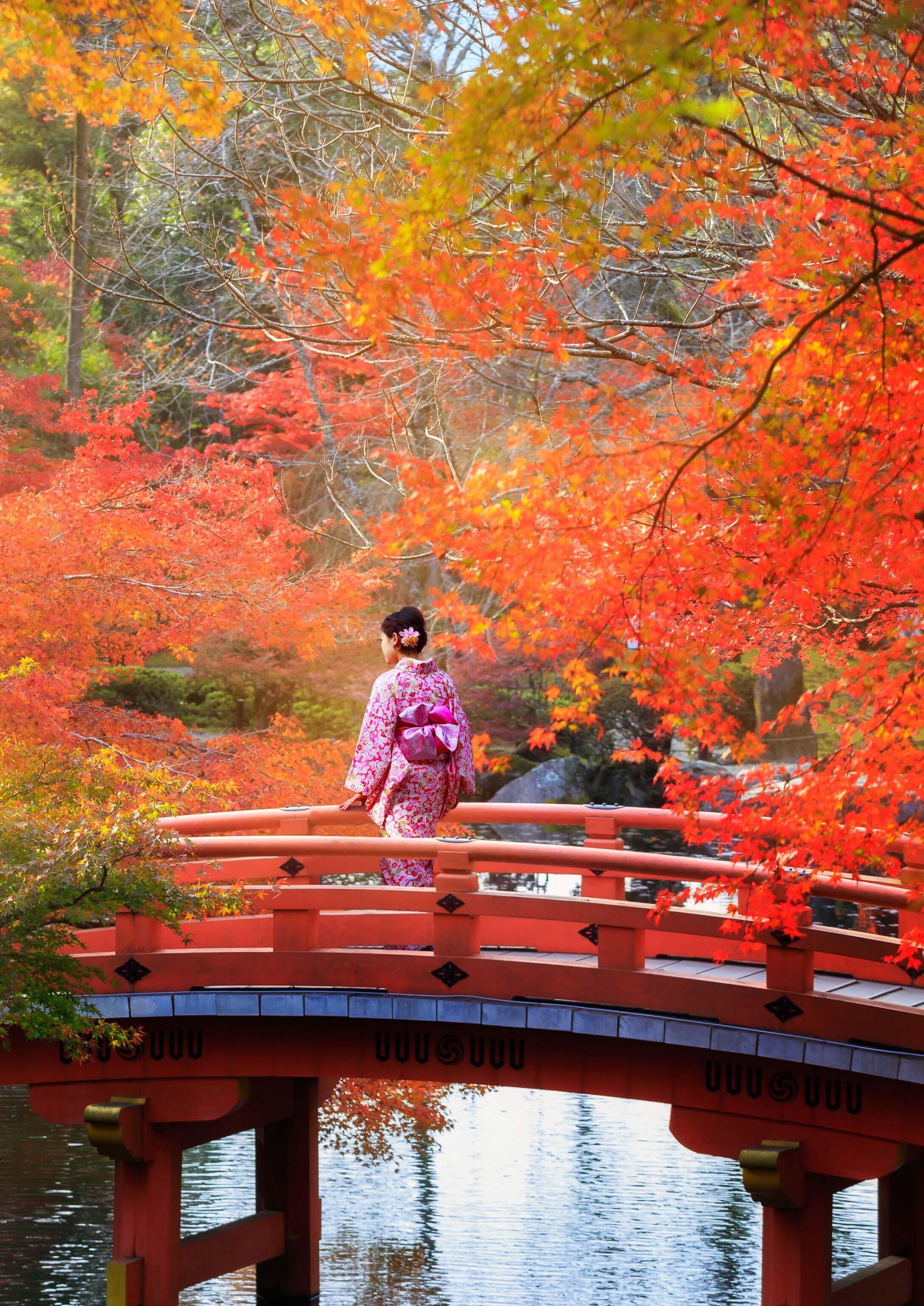
10 minute read
Falling for Koyo
Where to experience the prettiest landscapes of the autumn foliage season
Japan might be all about cherry blossom season, but once September hits, summer is farewelled and the focus shifts towards welcoming autumn and koyo zensen or tracking the progress of the leaves turning red. Much like the pink blooming sakura (cherry blossoms), the timing of the autumnal colour change depends on geography and Mother Nature. As a general rule, the wave of colour begins in Hokkaido, Japan’s northernmost point with Japanese maples from late September through mid-October, following in Tokyo in mid-October to mid-November, mid-to-late November in Osaka, and from late November to early December in Kyoto. For the most up to date predictions, keep an eye on the Japan Meteorological Corporation site for their koyo forecast and viewing dates. The forecast is regularly updated with the first release of the season expected in early September.
Much like the sakura zensen, tracking the koyo zensen is an annual ritual in Japan. But unlike the cherry blossoms, the autumn foliage can be experienced at a much more leisurely pace; the season lasting around 50 days or so. This makes holiday planning around koyo a flexible one, especially if you’re open to letting the leaves lead your itinerary.
HOW TO PARTICIPATE IN MOMIJIGARI
Autumn foliage hunting (momijigari) is as popular as hanami (flower viewing) in the spring, a tradition which stems from the Heian period (otherwise known as Japan’s golden age) from 794 AD to 1185 when for Buddhists, momijigari was considered a spiritual and symbolic reminder that life is ephemeral. Viewing parties are popular among many Japanese people – it’s hard to ignore the beauty of the red and gold foliage – and momijigari can be anything from strolling, biking, picnics, camping trips, taking a boat out on one of the many beautiful lakes or simply sitting in a park and soaking in the magic of the season. Here, 15 places to experience Japan’s autumn foliage season.
1. JINGU GAIEN GINKGO AVENUE, TOKYO
This 146-ginkgo tree lined road is one of the most popular autumn spots in Tokyo, attracting around 1.8 million visitors every season. Extending from Aoyamadori to Meiji Jingu Gaien, the ground transforms into a golden carpet of ginkgo leaves and walking through provides plenty of opportunity to relive your childhood and, of course, enviable Instagrammable moments if you’re that way inclined.
WHEN
September to mid-October
GET THERE
Gaienmae Station or Aoyama Icchome Station on the Tokyo Metro
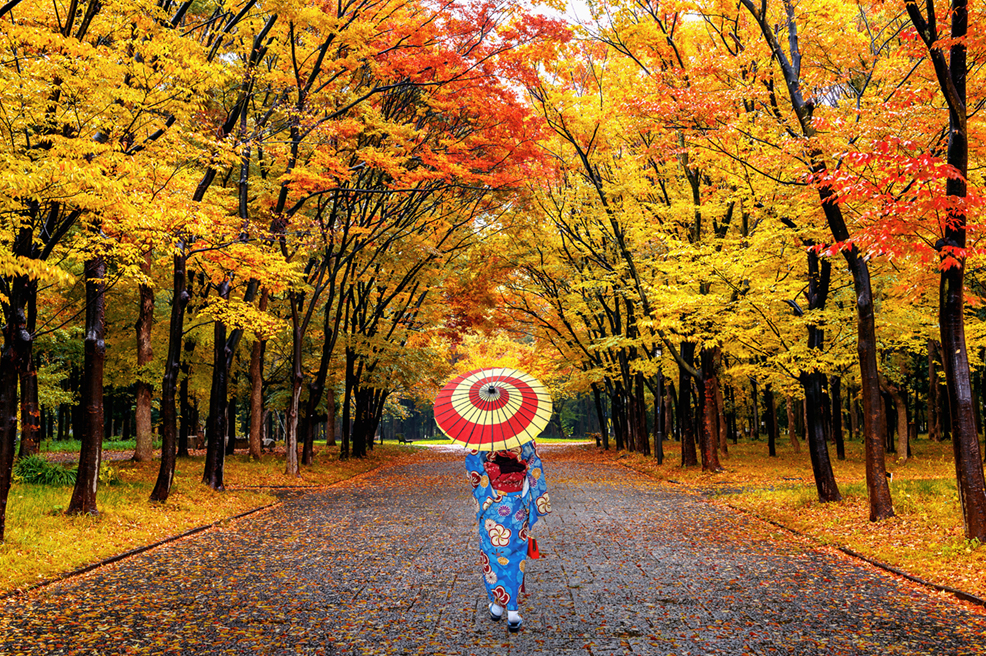
2. RIKUGIEN GARDEN, TOKYO
Rikugien Garden is a Japanese garden from the Edo period (1603 – 1867) and is a specially designated national scenic spot for cherry blossom and autumn foliage viewing. It is home to around 400 Japanese maples, and from late November every year, the trees begin to turn to red and gold. The park is illuminated from sunset and there’s a teahouse to rest your feet and take in the scene.
WHEN
Late November to early December
GET THERE
Komagome Station on the JR Yamanote Line or the Tokyo Metro Namboku Line
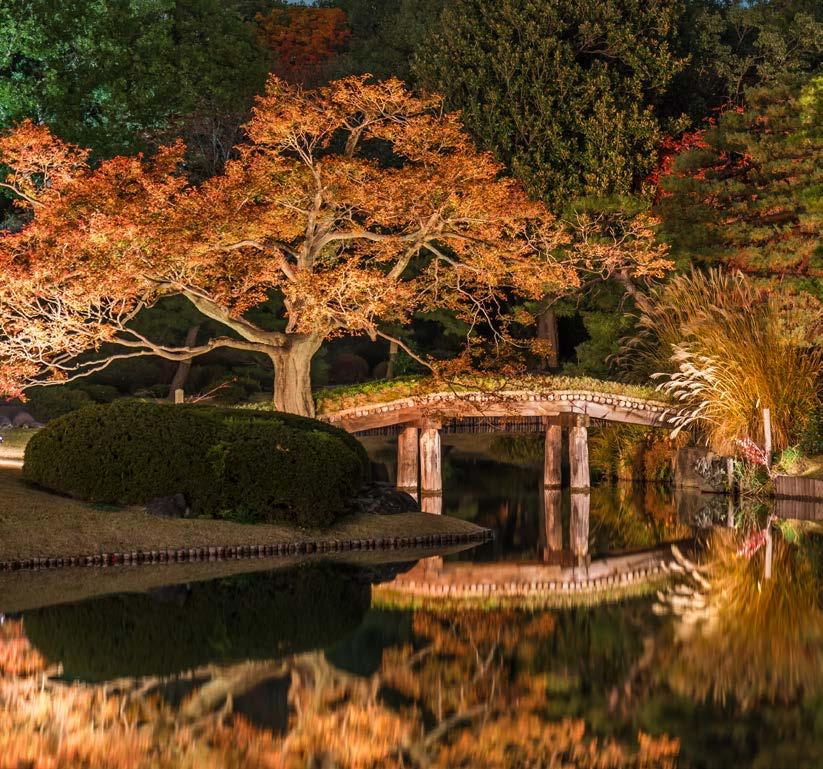
3. MT. TAKAO, TOKYO
Mt. Takao is easily accessible from the city centre and one of the best places to enjoy both the autumn foliage and go on a hike. There are six routes to choose from with varying difficulties. To make things easy, taking the cable car up and hiking down is an option. From the viewpoint at the top, you’ll see the skyscrapers of Tokyo at a different angle and on a clear day if you’re lucky, Mount Fuji.
WHEN
Mid-November to early December
G
Takaosanguchi Station takes about 50 minutes by express train from Shinjuku Station on the Keio Line
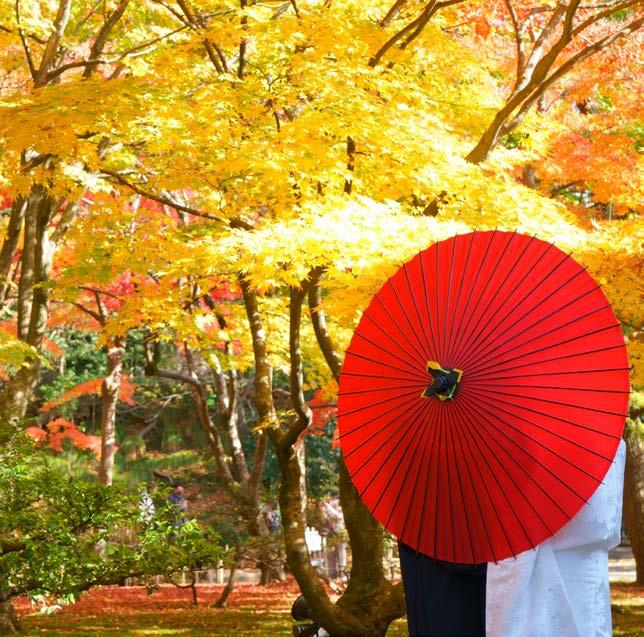
4. KEGON WATERFALL, NIKKO, TOCHIGI
Several autumn viewing spots in Nikko are within walking distance from each other, but the 100m tall Kegon Waterfall gets our vote. There are multiple viewpoints here, too – take the Akechidaira Ropeway to the observatory for a view from above and enjoy the postcard-perfect view of the waterfall and Lake Chuzenji among the vibrant autumn trees.
WHEN
Mid to late October
GET THERE
Trains to Nikko leave Tokyo at least once an hour via the JR and Tobu lines. From Nikko, the journey to the Chuzenjiko bus terminal takes just under an hour
5. ARASHIYAMA, KYOTO
The world-famous Arashiyama needs no introduction. It’s not short of viewing spots but one not to miss is the spectacular view of the Togetsukyo Bridge with Katsura River flowing underneath. Hike up to Monkey Park Iwatayama on Mount Arashiyama to visit Tenryuji Temple, a UNESCO site, before continuing to the iconic Bamboo Forest.
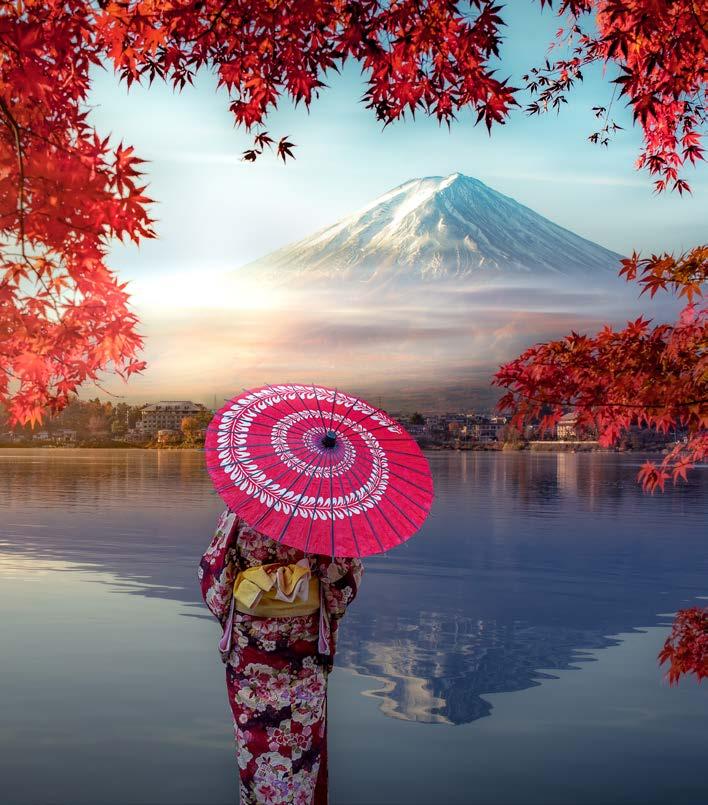
6. KIYOMIZUDERA, KYOTO
Kiyomizudera is considered one of the most iconic temples in Japan for its three-storey Koyasu Pagoda and Otowa springs. Autumn is particularly special; the whole area transforms into a photographer’s dream with the illumination of 1000-plus maple trees every evening.
WHEN
Late November to early December
GET THERE
Bus from Kyoto Station
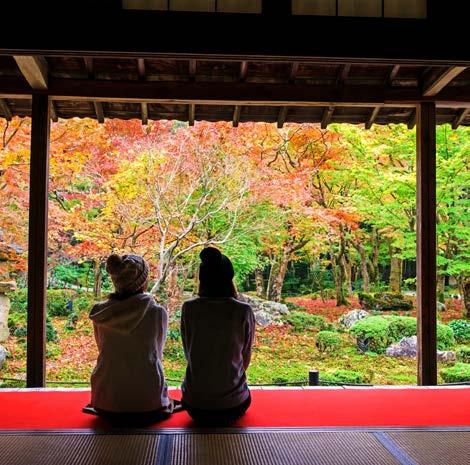
7. FUSHIMI INARI SHRINE, KYOTO
No trip to Japan is complete without a visit to the Fushimi Inari Shrine, and the forest behind the shrine is well known for its hiking paths, torii gates and cedar trees. If the cedars are a bit disappointing – they don’t show a lot of colour – keep heading upwards where you’ll find more vibrant red leaf trees.
WHEN
Late November to early December
GET THERE
JR Inari Station is a five-minute ride from Kyoto Station on the JR Nara Line
8. MIYAJIMA ISLAND, HIROSHIMA
Miyajima’s Momijidani Park extends along the river to the foot of Mount Misen, the highest peak on Miyajima. The park is a 20-minute walk from the Miyajima Sanbashi Bridge where 700-plus trees dot the park, including Japanese maples. The Miyajima Ropeway offers sublime aerial views of the mountain.
WHEN
Mid-November
GET THERE
Trains to Miyajimaguchi depart from Hiroshima Station every 15 minutes on the JR Sanyo Line
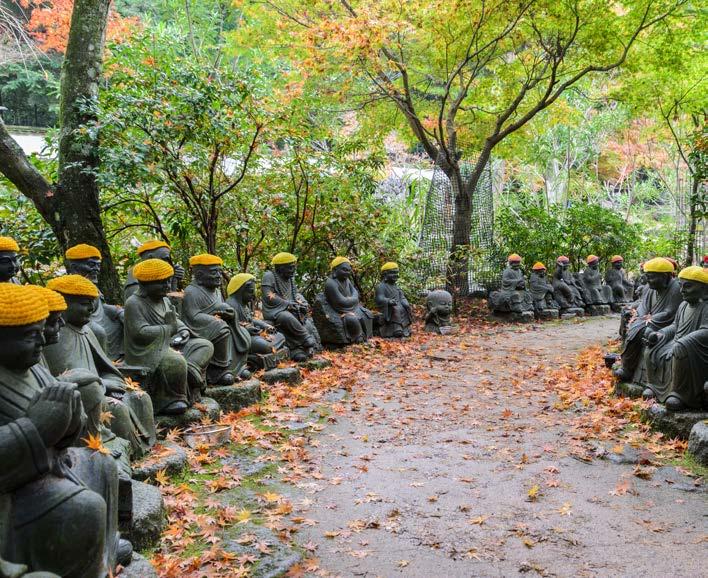
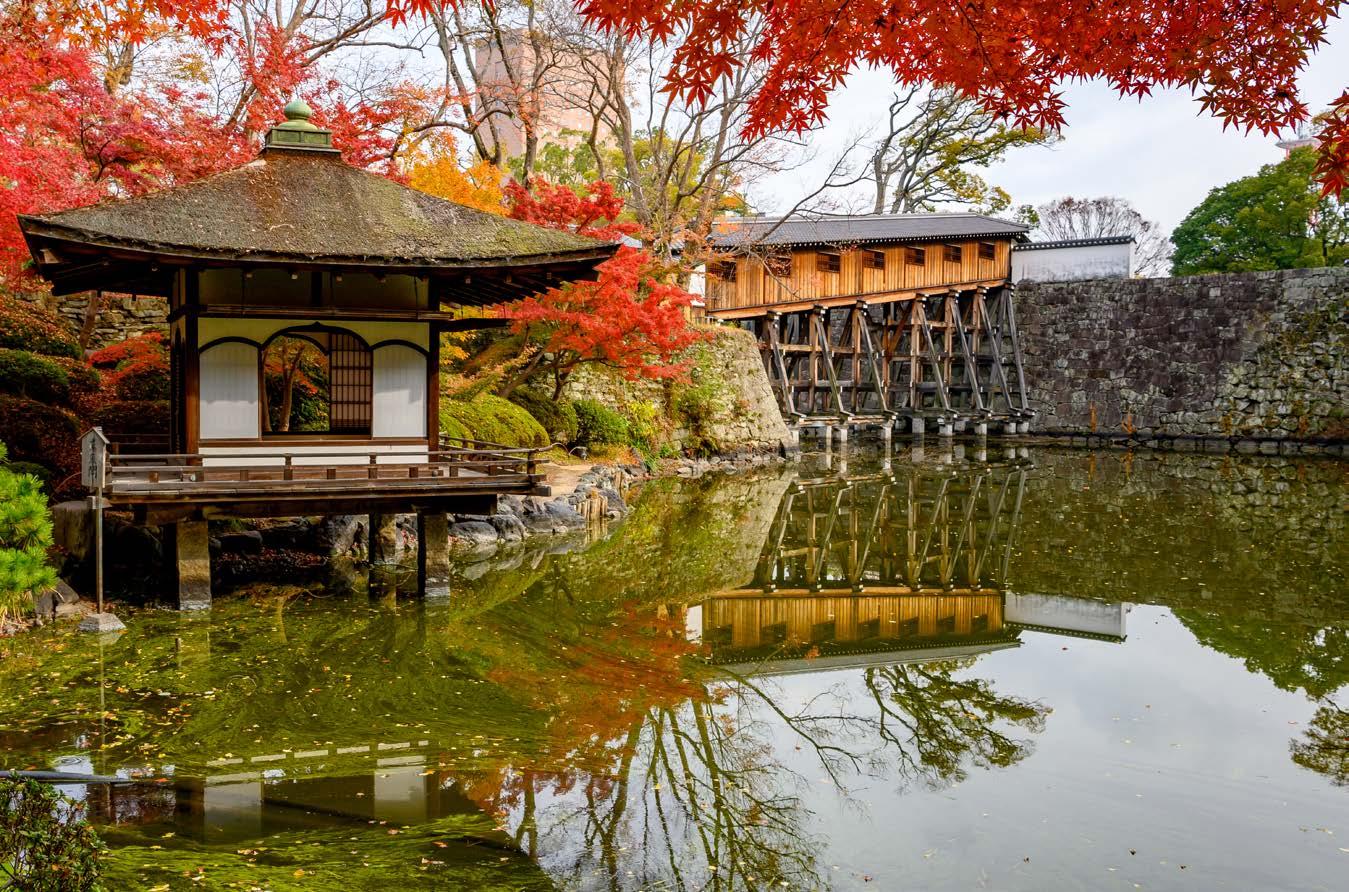
9. SHIRAKAWA-GO, GIFU
The historic village of Shirakawa-go, a UNESCO site, showcases a building style known as gassho-zukuri. If you’re in the area during koyo zensen, you’re in for a treat – this is one place where time has stood still, and this is truly evident when seasonal festivities like cherry blossom and autumn foliage roll around. Look out for hanging persimmons in the villages and other traditional touches.
WHEN
Early to mid-October and November
GET THERE
Take the Hokuriku Shinkansen from Tokyo to ShinTakaoka Station (3 hours) and transfer to the Kaetsuno Bus for Shirakawa-go (2 hours)
10. NARUKO GORGE, MIYAGI
The scenic view from Obukasawa Bridge attracts millions of tourists every year for good reason: a bouquet of reds and yellows blanket the hillsides of the gorge which provides a stunning contrast with the greens of the pine trees. There’s also a trail (albeit shortened after an earthquake) where you can walk or hike safely while taking in the views. Afterwards head to an onsen for some well-deserved R&R.
WHEN
Mid-October, early November
GET THERE
A 10-minute cab ride or 30-minute walk from JR Naruko Onsen Station
11. KORANKEI GORGE, AICHI
Located in Toyota City and listed as another nationally famous spot for koyo events, including a monthlong festival in November. Some 4,000 maple trees transform into reds and yellows and during the festival, the trees are lit up and are a spectacular sight. Eat from the many food stalls, and visit Asuke House, the folk museum to see live performances and participate in the workshops.
WHEN
Early to late-November
GET THERE
From Higashi Okazaki Station, take Meitetsu Bus towards Asuke and get off at Korankei
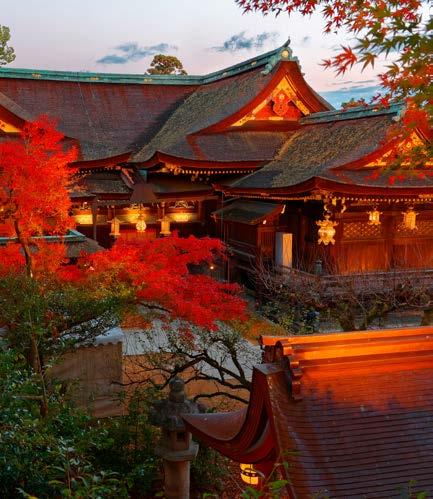
12. HAKONE TOZAN TRAIN, HAKONE
Enjoy the autumnal scenery in Hakone by taking a ride on the Hakone Tozan Railway, Japan’s oldest mountain railway. It works its way up to Mount Hakone through a beautiful forest and pauses a little while at the bridge between Tonosawa and Ohiradai stations to let passengers take in the views. The train runs year-round, so it’s a fun option to take if visiting during cherry blossom season, too.
WHEN
November
GET THERE
The Tokaido Shinkansen Line and the Odakyu Line from Tokyo and from Odawara you then take the Hakone Tozan train
13. KAMAKURA, KANAGAWA
An easy day trip from Tokyo, the old capital of Kamakura has it all: breathtaking scenery, easy hiking trails, ancient temples and the autumn foliage season makes everything even more spectacular. The idyllic viewing sites in Kamakura include the Kotokuin Temple, the home of the Great Buddha, and the Hokokuji Temple, or bamboo temple.
WHEN
End of November to mid-December
GET THERE
Tokyo Station to Kamakura Station takes around an hour
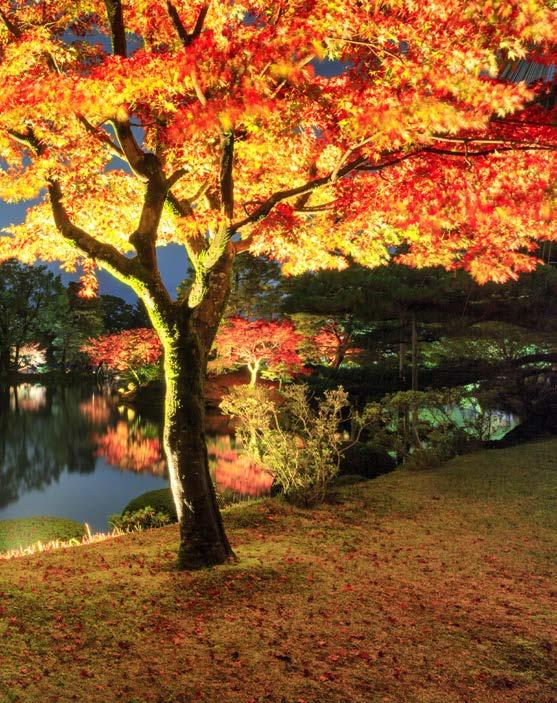
14. DAISETSUZAN NATIONAL PARK, HOKKAIDO
The largest national park in Japan is also one of the first regions which experiences the autumnal colours. Also known as ‘playground of the gods’, the park is home to abundant wildlife, onsen resorts, picturesque trails (try Ginsendai Trailhead), and volcanic mountains including the tallest mountain on Hokkaido, Mount Asahi, which is easily accessible via a ropeway.
WHEN
Mid-September to early October
GET THERE
Asahikawa Station is a 90-minute train ride from Sapporo Station aboard the Lilac or Kamui limited express train
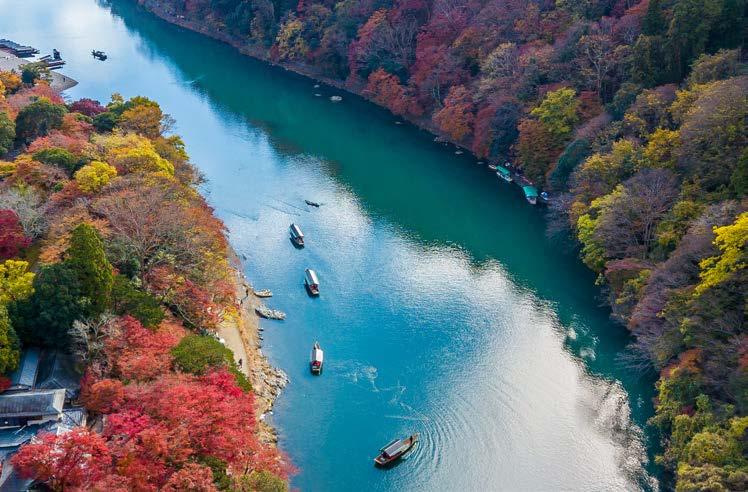
15. METASEQUOIA NAMIKI AVENUE, SHIGA
This pretty avenue with 500-plus metasequoia trees is located in Takashima City, northwest of Shiga Prefecture. Set against the Nosaka mountains, Metasequoia Namiki runs for about 2.4 kilometres and continues toward the Makino highlands. The Metasequoia Autumn Festival also takes place during the season.
WHEN
Late November to early December
GET THERE
From JR Kosei Line Makino Station, take Makino Kogen Bus and get off at Makino Pick Land
HOW TO LEAF-PEEP LIKE A LOCAL
With a limited amount of time in Japan, either before your tour or after, it’s very tempting to zip through your must-see list, bouncing from one destination to the next. But following the Japanese approach to momijigari means consciously slowing down to appreciate.
TAKE A SLOW TRAIN
Taking a slow train through the countryside to witness the changing colours and scenery is a beautiful experience. The JR East Shiki-Shima train is just one option: this luxury train journey snakes through the country over the course of a couple of days.
DRIVE THROUGH THE MOUNTAINS
More than 70% of Japan covered in mountains –that’s a lot of leaves to see. Japan has an excellent public transport system but many remote places – national parks, mountaintop temples –are inaccessible without a car. If you’re keen on exploring these areas while visiting Japan, you’ll need to apply for an international driving permit before you depart your home country, and either rent a car on arrival or book ahead.
GO FOR A WALK OR HIKE
Immersing yourself in nature is the name of the game – even if you can’t head out to the countryside, ditch the public transport and explore the cities and towns on foot as much as possible, stopping to admire the gardens and lakes, and pick up some delicious autumn snacks as you go (look out for yakiimo trucks selling piping hot sweet potato).






